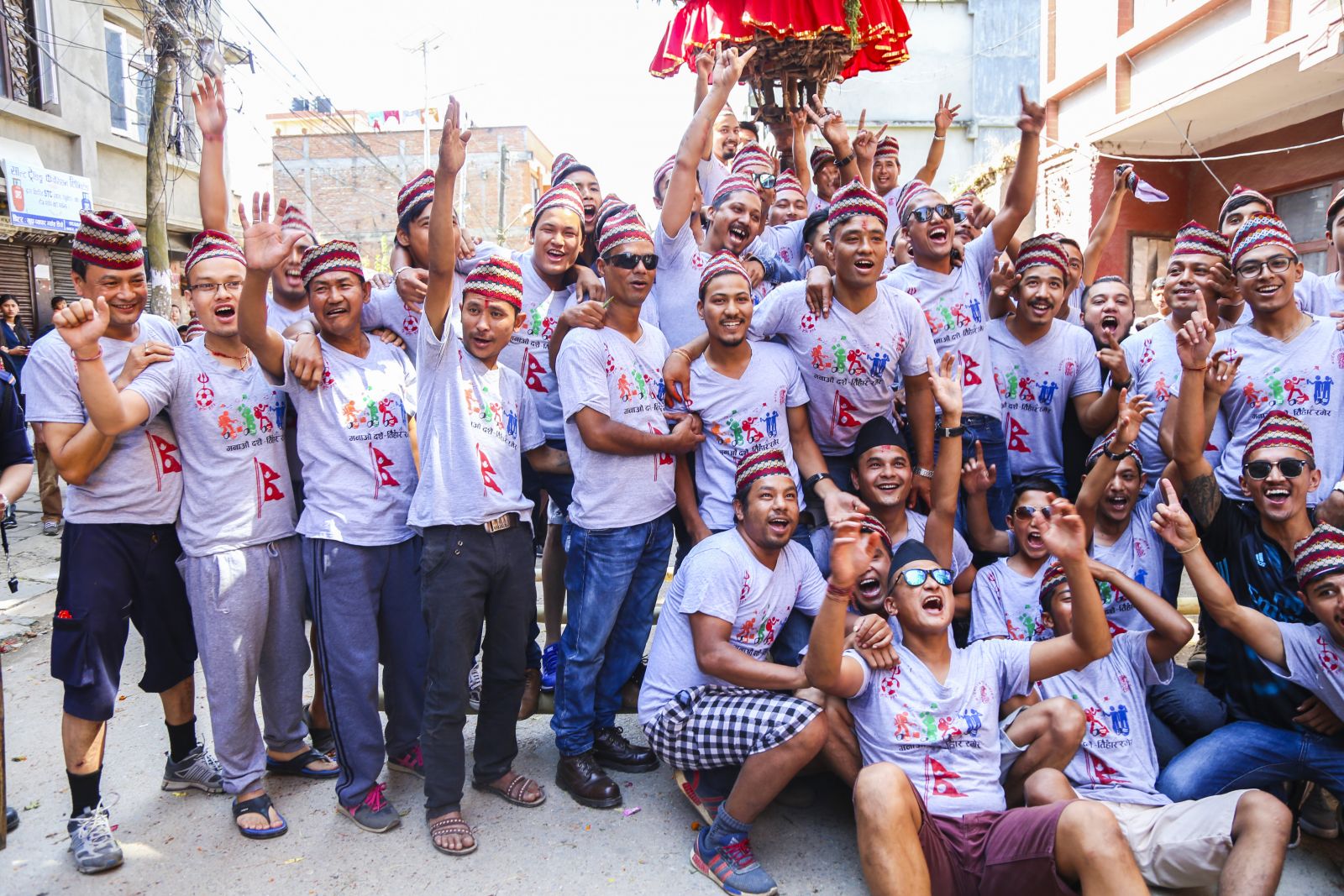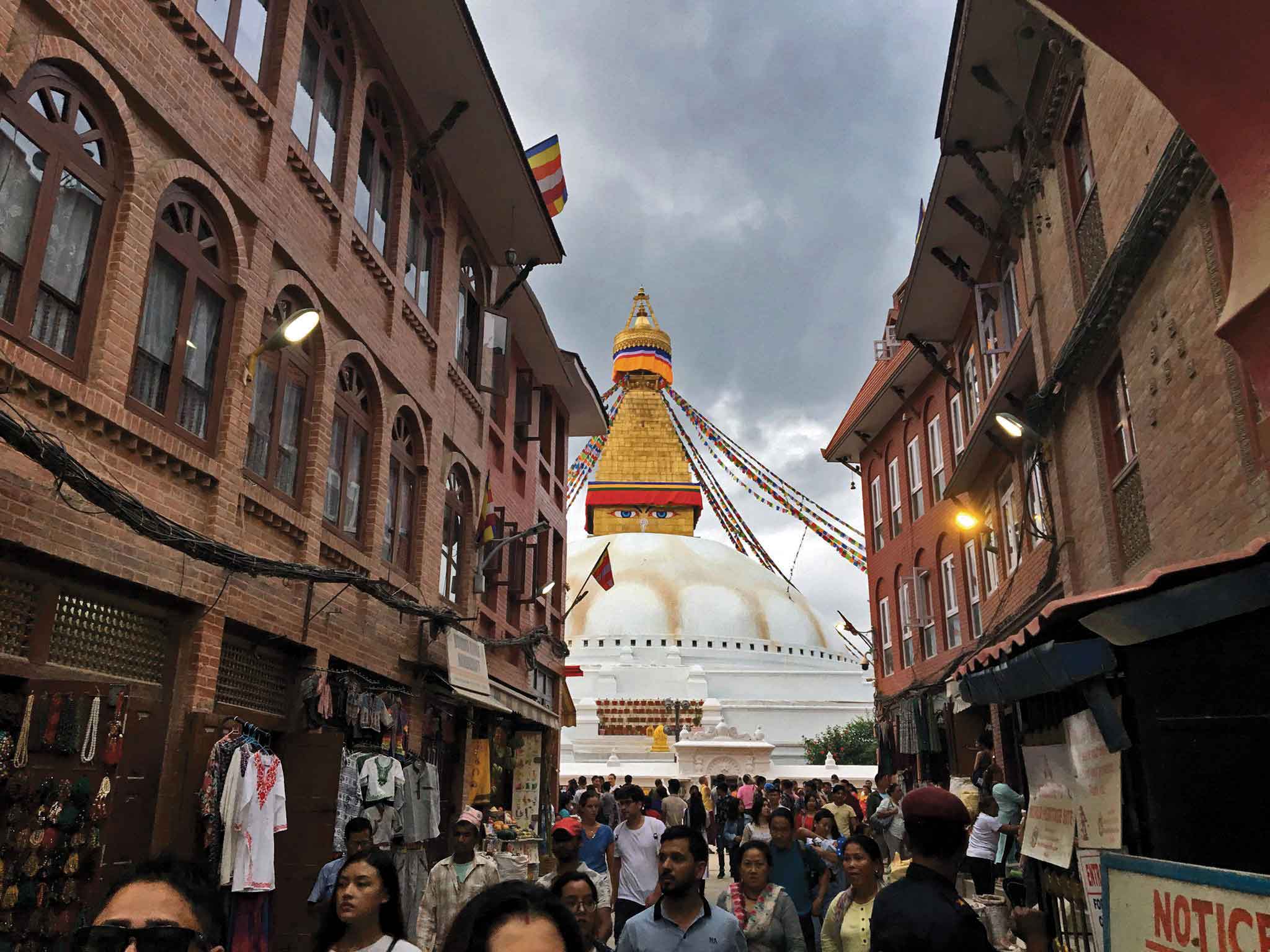Nowhere else but in Hadigaun!
It is a strange phenomenon, one must say—Hadigaun, a remnant of yesteryears, in a well-urbanized locality of cosmopolitan Kathmandu. One can presume that very soon it will be just another typical urban center. Right now, however, it still has some relics of the past, and quite a few traditional old houses in which live people who take pride in its history as an ancient capital, and who faithfully follow age-old rituals and customs and celebrate with gusto their own unique festivals, including one that has the tag of, ‘Nowhere else but in Hadigaun’!
In fact, so unique is this festival that a popular saying, “Kahi nabhaeko jatra, Hadigaun ma’, has arisen out of it. Transliterated, it means, ‘A festival like nowhere else, in Hadigaun’. It is often used metaphorically to comment on something away from the usual. This saying actually has a firm background, and there really is a festival that goes by the name, ‘Kahi Nabhaeko Jatra’!

So, what are the unique features of this jatra that is held the day after Dashain every year? The preparations start a week ahead with the making of wax flowers by a priest, who brings them from Shivpuri and offers them along with other ritual offerings to idols on three chariots (khuts). The khuts are saucer-shaped (unusual, to say the least!), and their pinnacles (gajurs) are at the bottom (really weird!). The jatra is held at night (another unique aspect) and also ends at night (the last night of Dashain).
One khut represents Brahma, the other represents Vishnu, and the third, Maheswor. They start from different locations—Kotal Tole, Nyalma Tole, and Bhimsen Tole—and circle the locality three times. As they make their way, the khuts are rotated clockwise by a man sitting at their base. From time to time, the khuts are rested on the street, where the locals come to pay homage. After having completed their journey, the khuts are dismantled.

Now, it is called a ‘jatra like nowhere else’ because of a promise made in ancient times by Hadigaon denizens to Lord Narayan. Ages ago, a woman pregnant with child was suffering great labor pain, and she was continuously crying “Aama! Aama!” (“Mother! Mother!”). Just then, Lord Narayan happened to be walking by in his mortal form, and he advised the distressed lady, “Why don’t you take Narayan’s name instead?” His words infuriated her, and she yelled at him to get lost. This wasn’t taken too well by the god, who sulkily made his way to the Himalaya. The lady, in the meanwhile, couldn’t give birth for a long time, and was in constant pain for twelve agonizing years.

The villagers couldn’t bear to see her agony, and they went to the Himalaya to beg Narayan to return with them and to forgive the woman. Now, Narayan wasn’t one to forget and forgive so easily, and he said, no, thank you, whereupon, the villagers promised to put up a jatra like he had never seen before if he came with them. And, that’s how this ‘nowhere else but in Hadigaun’ jatra originated. Soon enough, the woman was blessed with a bonny son, but funny thing is, he was mustachioed, having come out so late!











